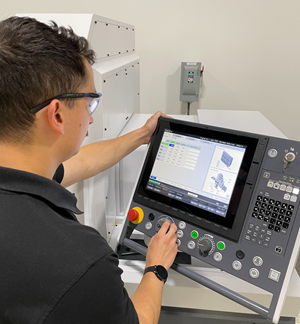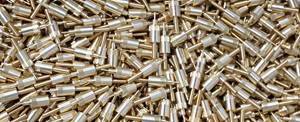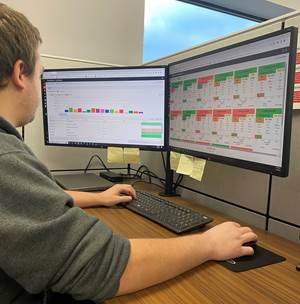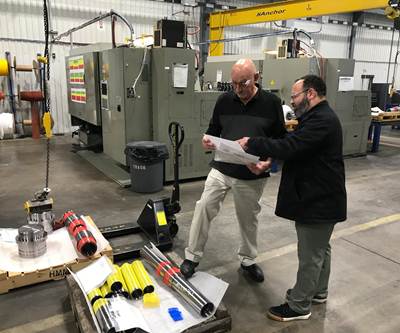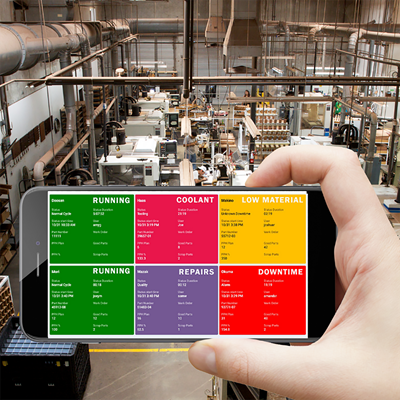Machine Monitoring Circles Back to Basics
Deeper insights from more varied data are no replacement for manufacturing fundamentals.
Share





Hwacheon Machinery America, Inc.
Featured Content
View More



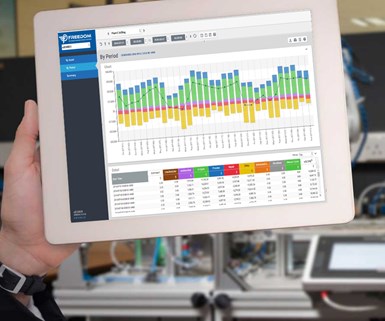
Machine monitoring provides accurate data in real time.
Machine monitoring has become more than a means of determining when equipment is down and why.
“When I started 15 years ago, we might have looked at 10 CNC variables,” says Jeff Price, executive vice president at machine monitoring software company Freedom IOT. “Now, we can get to any variable that is available on the control.”
For example, hydraulic levels, pressures and temperatures can expose machine health or part quality problems. Similarly, changes in spindle load might indicate a lubricity problem, improper parameters or even the wrong cutting tool. Different variables can be correlated for deeper insight as well. For instance, a system might issue an email or text alert to specified personnel when both spindle load and temperature reach a user-defined threshold. Monitoring can also extend beyond the CNC. “If the data is not already available, it’s cost effective to add sensors,” Mr. Price says, citing a recent case in which machine tool coolant tank sensors eliminated the need to check concentration manually.
“Implementing the performance side of OEE lagged the availability side of OEE because of technology. Automated quality metrics will lag performance.” – Jeff Price, Freedom IOT.
Adding more sensors and tracking more metrics is becoming more cost-effective thanks largely to the maturation and spread of underlying technology, he adds. For example, the MTConnect open standard for machine-to-machine communication has eliminated the need to configure software differently for different CNC systems. CNC developers have “opened up” as well, he says, a development consistent with a general trend toward interconnection and industry collaboration that goes beyond software. For instance, the company initially used a small industrial computer of its own design to plug extra sensors and older controls into its web-based system. Now, it uses a device from a dedicated electronics supplier that is both less expensive and more capable.
So far, most efforts to leverage more varied, granular data have focused on machine performance, Mr. Price says. However, raw performance — that is, the extent to which machine tools achieve cycle time targets — is only one aspect of how well machine tools are employed. Overall equipment effectiveness (OEE) also accounts for more basic uptime/downtime (availability) data as well as the ratio of good parts to bad (quality). “Implementing the performance side of OEE lagged the availability side of OEE because of technology,” Mr. Price says. “Automated quality metrics will lag performance. Today, we track the disposition of the part, good versus bad. Finding the root cause is next.”
Machine monitoring’s most basic functionality remains a valuable tool for confirming gut feelings, challenging assumptions, and asking the toughest questions.
And yet, for all the recent advances in machine monitoring, most users stand to benefit most from the simplest component of the OEE metric. “In our 15-year history, losses due to availability far outweigh the losses due to performance or quality,” he says.
The reason is that there are rarely technological solutions to availability problems. Changing how people work is difficult, and it can be tempting to direct focus and investment to issues seen as more reliably and easily solvable. “Manufacturers spend millions of dollars trying to take another minute out of the current cycle time and finding the right tool or process to improve quality but struggle with availability for myriad reasons, some unbelievably simple,” he says. “This wastes the total cost of ownership of the machine, person and overhead. Even worse, it adds millions of dollars in work-in-process and finished goods to meet demand.”
New capabilities aside, machine monitoring’s most basic functionality remains a valuable tool for confirming gut feelings, challenging assumptions, and asking the toughest questions. Recalling his time as lean engineer decades ago, Mr. Price says he would have been “100% more productive” with a monitoring system, because manually documenting “as-is” processes could take months. Nonetheless, the solutions to most availability problems tend to look the same today as they did then: instituting a foundation of essential manufacturing skills on the shop floor; committing to continuous improvement; and changing behaviors and processes to adhere as closely as possible to lean manufacturing and other established practices.
“There are a lot of companies that turn to machine monitoring so they can come closer to eliminating people to run the machines,” Mr. Price says. “Those companies are missing the most import asset: people. Machine monitoring is just that — it monitors the machine. It should be used proactively to augment continuous improvement initiatives, such as lean and Six Sigma.”
Related Content
Swiss-Type Control Uses CNC Data to Improve Efficiency
Advanced controls for Swiss-type CNC lathes uses machine data to prevent tool collisions, saving setup time and scrap costs.
Read MoreReinventing a Precision Shop With a Data-Driven Mindset
When this machine shop lost 90% of its business within three months, a reinvention was in order. Here's how it survived after quickly falling on hard times.
Read MoreMachine Monitoring Boosts Aerospace Manufacturer's Utilization
Once it had a bird’s eye view of various data points across its shops, this aerospace manufacturer raised its utilization by 27% in nine months.
Read MoreEasy-To-Install Data Acquisition System for Real-Time Monitoring Across Brands
cnSEE from All World Machinery Supply combines easy installation and monitoring across multiple machines.
Read MoreRead Next
In a Machine Shop, the Labor of Lean is Data-Driven
Approximating single-piece flow in a job shop environment requires an ongoing commitment to analyzing and acting on evidence.
Read More3 Principles for Growing with Machine Monitoring Data
Following a few basic principles can help shops get a return on their machine monitoring systems without losing faith first.
Read MoreVideo: The Impact of Artificial Intelligence (AI) on Manufacturing and Machining
The machine tool monitoring that many CNC machining facilities are doing today could be a first step toward their use of machine learning. In this conversation, MMS’s “Data Matters” columnist Matt Danford speculates on the coming role of AI for refining machining processes.
Read More

































.jpg;maxWidth=300;quality=90)



